In 1987, there were a total of seven women divided among two San Francisco Fire Department academy classes. One of the seven was Shelia Hunter — the only African-American in the class.
Thirty years later, Hunter, who served two years as a captain of backgrounds and investigations, is now surrounded by 285 uniformed women in the department.
After her recent return to the field as a lieutenant at Station 33, Hunter said she stays inspired by working within the community and helping people.
“Seeing the faces of children and adults when they see not only a female firefighter, but an African-American female firefighter … when they give the thumbs up, it makes me feel really good,” she said.
For Hunter, nontraditional fields of work were normal. Her mother worked as a machinist and was also a supervisor.
“She would sometimes share her stories about how difficult some males were, because they didn’t want a woman telling them what to do,” Hunter said.
And like her mom, Hunter has experienced similar challenges and barriers in her firefighting career.
“Just being a woman in the fire service has been filled with challenges,” she said. “I have seen some progress in acceptance throughout the years. There still remains a mentality that women are not as capable of performing as firefighters.”
Some of the barriers Hunter experienced while transitioning into a male-dominated field were nonacceptance, shunning and lack of help and support from fellow firefighters.
“I feel some barriers have been softened through perseverance, training, compassion and continuous education,” she said.
For Hunter, the fire service has been integral in not only being able to give back to the community and inspire young women, but also integral in her family life. She met her husband, who is a captain at Station 17, and their daughter, Khristina, who works at Station 51 as vacation relief, followed in their career-path.
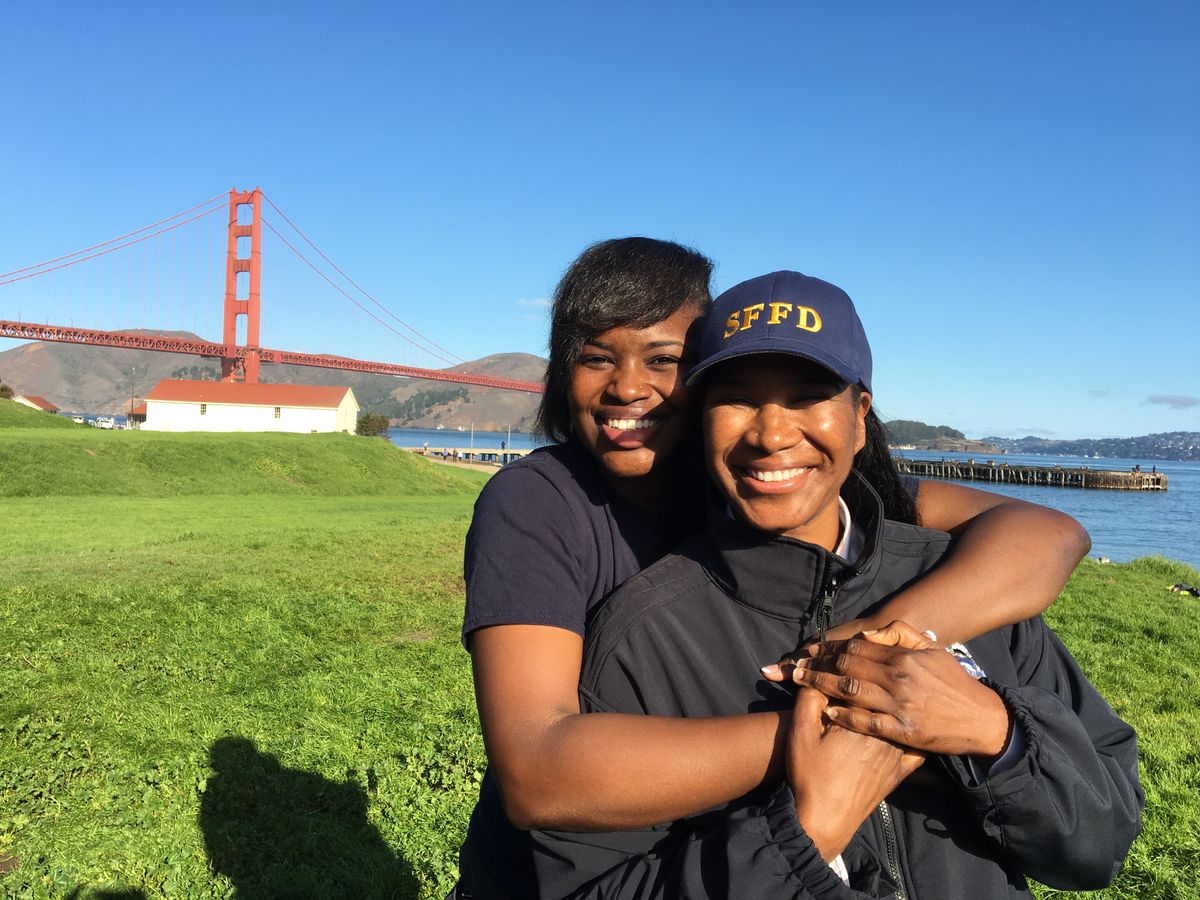
Shelia and Khristina Hunter. (Courtesy photo)
“I am very proud of my daughter,” Hunter said. “However, I am concerned about her because we’re in a new era of firefighting. I monitor the radio and listen for her calls. If she has a fire, I listen and pray that everything goes well and she returns safe.”
For Khristina, who joined at 22 years old in August 2015, she doesn’t focus on the dangers of the job.
“In my eyes, my parents were, and still are, indestructible,” she said.
Growing up with both parents in the fire department played a part in her decision to join the fire service, but was not the only influence.
“I didn’t know I wanted to be a firefighter until I got my EMT license during school,” she said. “I started asking questions about my parents’ careers and how they felt about firefighting. It was their stories that reassured my decision-making.”
And like the women who came before her, Khristina knows she’ll make mistakes, but she’s focused on doing her job — and doing it well.
“Open your ears, close your mouth and work hard,” she said. “I want to be one of those members that someone feels comfortable asking a question and knowing they will be getting a solid, competent answer.”
The best piece of advice her mom and dad passed along is to be herself.
“She is very strong-willed,” Hunter said. "[We told her] don’t ever compromise yourself, remain humble, work hard and always try to learn something new during your shift.”
Just like the Hunters, chief operator Kacy Cardinale knows what it’s like to have firefighting blood run in the family.
Family ties
Cardinale, who joined the department in 1990 at 21 years old, drives and assists the chief at incidents and assists with staffing for the southern half of the city. She works at Division 3 Station 7.
She’s also the current president of the United Fire Service Women, which supports and advocates for the welfare of women in the SFFD, and is part of the department’s breast cancer biomonitoring study to help extinguish breast cancer in the fire service.
Her dad, Chief Frank Cardinale, retired six years ago. They worked together for almost 20 years. In fact, they were the first and longest-serving father-daughter duo in the department.
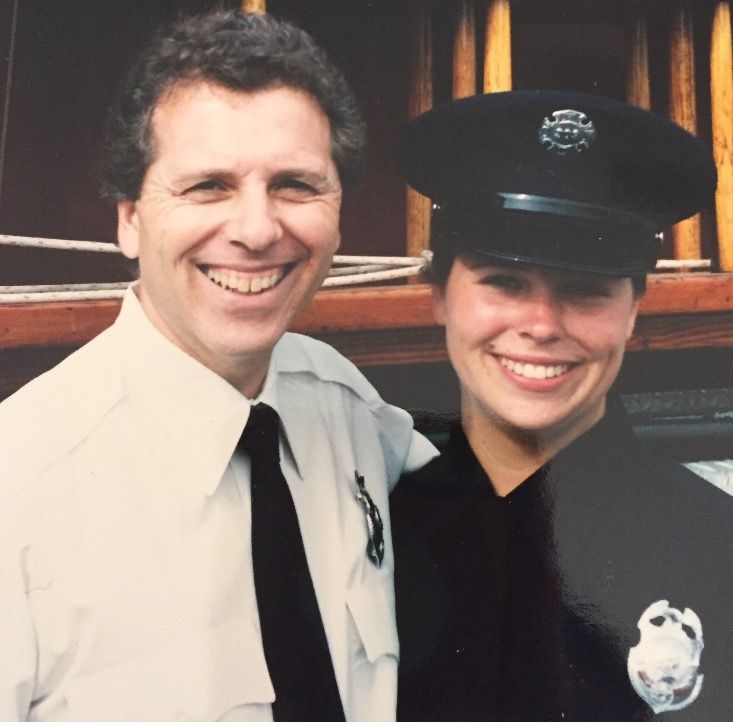
Kacy Cardinale with her dad, Chief Frank Cardinale, after her graduation from training. (Courtesy photo)
“I was very lucky to have my dad from day one,” Cardinale said. “We were actually partnered for two years. I feel very blessed to have been able to spend that much time with my dad and learn from him.”
Cardinale was a senior in high school when women first entered the SFFD. There were about 40 women in the department when she later joined.
“My dad said I should sign up, that I’d be good,” she said. “I was strong and athletic, so he brought me down to 44 Gough Street to put in an interest card.”
Like Hunter, Cardinale’s mom was nervous about her daughter taking on a firefighting career.
“She raised me to believe I could do whatever I set my mind to,” Cardinale said.
Because Cardinale was young when she entered the fire service, she became included in more conversations by answering senior members’ questions during drills on fire department skills.
“The older members taught me a lot when I was new,” she said.
Her advice to other women joining the ranks is simple. “Take classes and ask questions. We tend to try to blend in and not stick out. Of course we stick out. That’s laughable now, but be confident to talk to others.”
In another 30 years, when SFFD is celebrating 60 years of women in the fire service, Cardinale said she hopes men and women apply equally.
“I hope no one thinks twice at the fact that a woman wants to be and is a firefighter,” she said. “I hope women will be able to have the career they desire. Whether it’s being a lifetime firefighter or getting promoted to the top … it’s really my same hope for anyone in the department.”
As far as promotions go, Battalion Chief Anita Paratley has made it her mission to mentor new recruits and help them understand firefighting and the promotion process.
‘I never thought about being a firefighter’
Chief Paratley grew up in the New York-area in Long Island and is from Brooklyn.
“Being a firefighter wasn’t really an option in the 1960s as a kid,” she said.
When she moved to California in 1980, she became a social worker and enjoyed helping others.
“It was really intense and I was very young. It didn’t pay very well either. I got a job at FedEx and eventually drove their semi and doubled my income.”
And even though she had fun and met a lot of people, it wasn’t meaningful enough.
“I was playing women’s softball in San Francisco and one of the women on my team told me that she had heard the department was recruiting women. We went to a meeting and I was impressed.”
Chief Paratley later took the firefighter exam — among 8,000 others — in 1988 and ranked in the low 200s.
Being her father’s only daughter, Chief Paratley said her dad, an engineer, was supportive but also worried about her career choice.
“He got worried that first year, but he was 100 percent supportive. He came to my graduation … and even before he passed away last year, I told him I was going to become a battalion chief and he gave me a big thumbs up,” Chief Paratley said.
When Chief Paratley entered the fire service, she had just turned 32. Her first fire call was the Loma Prieta earthquake in 1989.
“I liked how I had the maturity and I had worked in mental health so I enjoyed the crisis intervention aspect of firefighting,” Chief Paratley said. “I felt like I was a social worker with an ax. It was the best of two worlds coming together — and was the best decision I ever made in my life.”
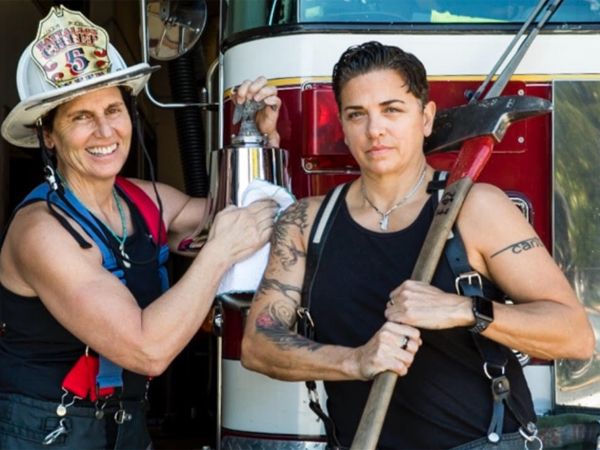
Chief Anita Paratley, left, with Lt. Brie Matthews, right. (Courtesy photo)
Chief Paratley, a breast cancer survivor, is starting her 28th year this summer and is about to turn 60 years old. She still remembers what it was like standing out as a woman among male firefighters.
“I had some tough moments and some very funny moments,” she said. “One time, I jumped on a hose line with a guy and I pressed myself against him and he turned around and was like, ‘Oh my God, there’s a woman behind me.’ It just didn’t occur to them at all. Even though diversity in theory is always the right thing, it’s hard in practice.”
But over her 28 years at SFFD, Chief Paratley said she feels well-loved.
“Yes, there have been jerks. But for every jerk, there were hundreds of wonderful people. I represented the new change in the fire department. I always felt like if I worked hard and gave them the respect that it would come back … and it did.”
Chief Paratley plans to retire at age 62 with 30 years at SFFD.
“I never thought I would go as far as I went,” she said. “I’m a battalion chief, who knew?”
The best advice Chief Paratley would give others considering a firefighting career, much like Khristina Hunter acknowledged, is to learn from mistakes.
“Mistakes can be embarrassing or funny, but don’t take it to heart because mistakes are what you learn the most from,” she said. “Be strong from your mistakes. Don’t hide them. The mistakes will teach you how to become a better firefighter.”
For Angela Romero, Chief Paratley played a key role in teaching her how to become a better firefighter. Paratley was her inspiration and role model.
“When I would practice for the physical agility test, Chief Paratley, who was a firefighter at the time, would stand behind me and not only give me techniques, but would tell me that I could do it,” Romero said.
‘I wanted to help others’
Romero was born and raised in San Francisco. She went to an all-girl high school and received a bachelor of science in international marketing. She entered the SFFD in 1998 at 32 years old. She’s now 51 years old and lieutenant of Engine 18, which is staffed with the most women in the department.
When she was laid off in 1996, her husband asked her to go with him to pick up an application for the SFFD.
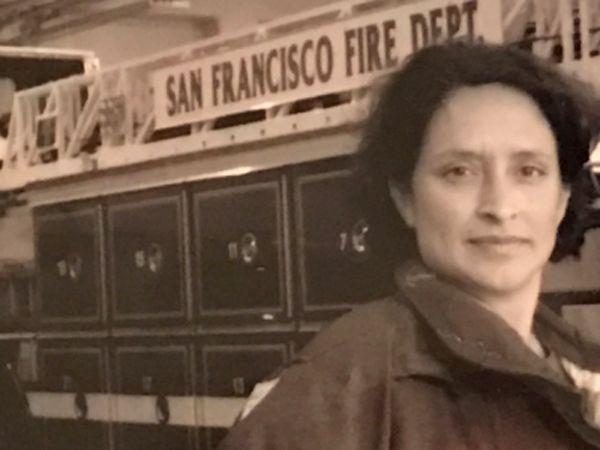
Lt. Angela Romero. (Courtesy photo)
“I thought I was just going for a ride, but when we arrived he told me that we should both apply,” she said. Her husband was hired in 1999.
“Even though he was not hired until almost a year after I was, he never became jealous. He was, and still is, very proud of me.”
Lt. Romero said she plans to train incoming recruits before the end of her career.
“I hope to see more women in high-ranking positions … more women training our incoming recruits,” she said.
In her experience, Lt. Romero said she was fortunate to have worked with men who taught her the ins and outs of firefighting.
“They never made me feel different because I was a woman. You just have to study, work hard, and remain driven and passionate. Never let anyone tell you that you can’t do it.”
In that regard, Battalion Chief Nicol Juratovac couldn’t agree more.
Excelling in athletics
Chief Juratovac joined the SFFD in 1997 as a firefighter-EMT. She’s currently assigned to Battalion 1 overseeing Stations 2, 13, 28 and 41.
Growing up in San Francisco, most of her Little League coaches were firefighters. As an athlete, she gravitated toward firefighting due to its physical nature. Softball, according to Chief Juratovac, was an equalizer for her at the department. However, she encountered certain barriers when she was promoted as lieutenant.
“I realized that I was entering unchartered territory in a bastion of male machismo,” she said. “My mentors, who ranged from men and women of all ethnicities, both in and out of the SFFD, were instrumental in helping me deal with adversity and challenges that I never dealt with in my life.”
Chief Juratovac teaches part-time at the City College of San Francisco’s fire science program and helps support and develop young women interested in firefighting. The best advice she gives her students is to keep working hard.
“If you know your job, there is nothing they can do or say to you,” she said. “Most people in the fire department are rooting for you and believe in you. You must believe in yourself. Have mentors. Call them. They want to help. You’re not alone and others have gone through what you’re going through.”
Chief Juratovac said she hopes to give back to other women interested in the profession for years to come.
Just like those who came before her, Fire Chief Joanne Hayes-White is big on giving back.
Great fit from day one
Chief Hayes-White, 53, who was sworn in as SFFD’s first female fire chief in 2004, was born and raised in San Francisco.
“When I was growing up in the ‘60s and ‘70s, I never contemplated being a firefighter,” Chief Hayes-White said. “It wasn’t a viable occupation. Now, that’s different.”
Chief Hayes-White went to college and earned a degree in business. She worked in the human resources field for a year and a half.
“What I learned back then has definitely helped me in my job as chief,” she said. “I worked at a hospital in human resources, I was learning a lot at the time, but I wanted to do something different and more interactive with the community.”
Chief Hayes-White started with the department in 1990 — there were 15 to 20 women in the department at the time.
“Candidly, there were some very long days,” she said. “I recognized early that change was difficult. The fire service tends to be very traditional. Along the way, I don’t think I would be here today as fire chief without the mentorship and support along the way of some really good men I worked with.”
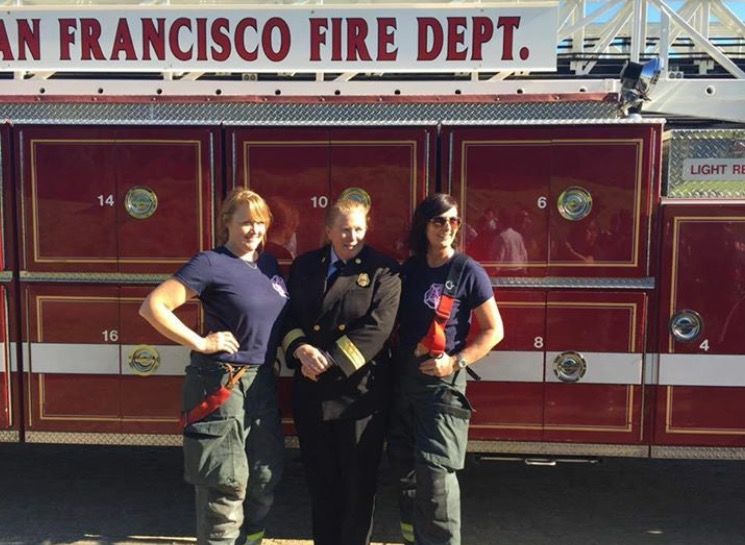
Chief Joanne Hayes-White (middle). (Courtesy photo)
Being the department’s first female fire chief is not only an honor and privilege, but it’s also something Chief Hayes-White said she doesn’t take lightly.
“When I first got the job, people would say what a great role model I was for young women,” she said.
But for Chief Hayes-White, it was more important to be a role model for her three sons.
“They were 10, 7 and 4 at the time I became chief. So, yes, I was a role model for young women, but equally so — and maybe more importantly — for young boys,” Chief Hayes-White said. “For my boys to see their mom leading and succeeding in a male-dominated environment, I think that sends a message that we can put aside the gender stereotypes and it’s about the skills, abilities and capabilities.”
In 2014, several of San Francisco’s rank-and-file firefighters voted “no confidence” in Chief Hayes-White.
“I rose above that, weathered that storm and got through it,” Chief Hayes-White said. “With this job, you don’t always get the outcome you want when you’re on scene or working in a difficult environment. But more often than not, we’re able to turn someone’s worst day into a day that’s more manageable.”
Along her almost 27-year career, Chief Hayes-White said her biggest mentors were not affiliated with the fire service.
“My biggest mentors were my parents … they were — and still are — essential figures on how I got to where I am today,” she said. “One of my proudest moments was having my boys and my parents there with me when I was sworn in.”
Nonetheless, Chief Hayes-White said her parents were skeptical when she decided to pursue a firefighting career.
“They were concerned because there were very few women on the job, it was very dangerous, and from a practical standpoint, my parents sacrificed a lot to put us through college, and firefighting didn’t require a college degree.”
The sacrifices that Chief Hayes-White’s parents made, and the skepticism they held, didn’t hold her up too much.
“It was not just ‘me,’ it was ‘we,’ because they supported me. I put myself way out there in an occupation that they were concerned about, but they let me do it.”
In September, the department will hold a celebration for active and retired members to celebrate 30 years of women in the SFFD. The dinner, including a program with guest speakers, is a chance for members to reflect on the changes that have occurred in the past 30 years.
For Chief Hayes-White, along with past and current members, she hopes in the future that there are more women in the fire service in positions of leadership for years to come.



